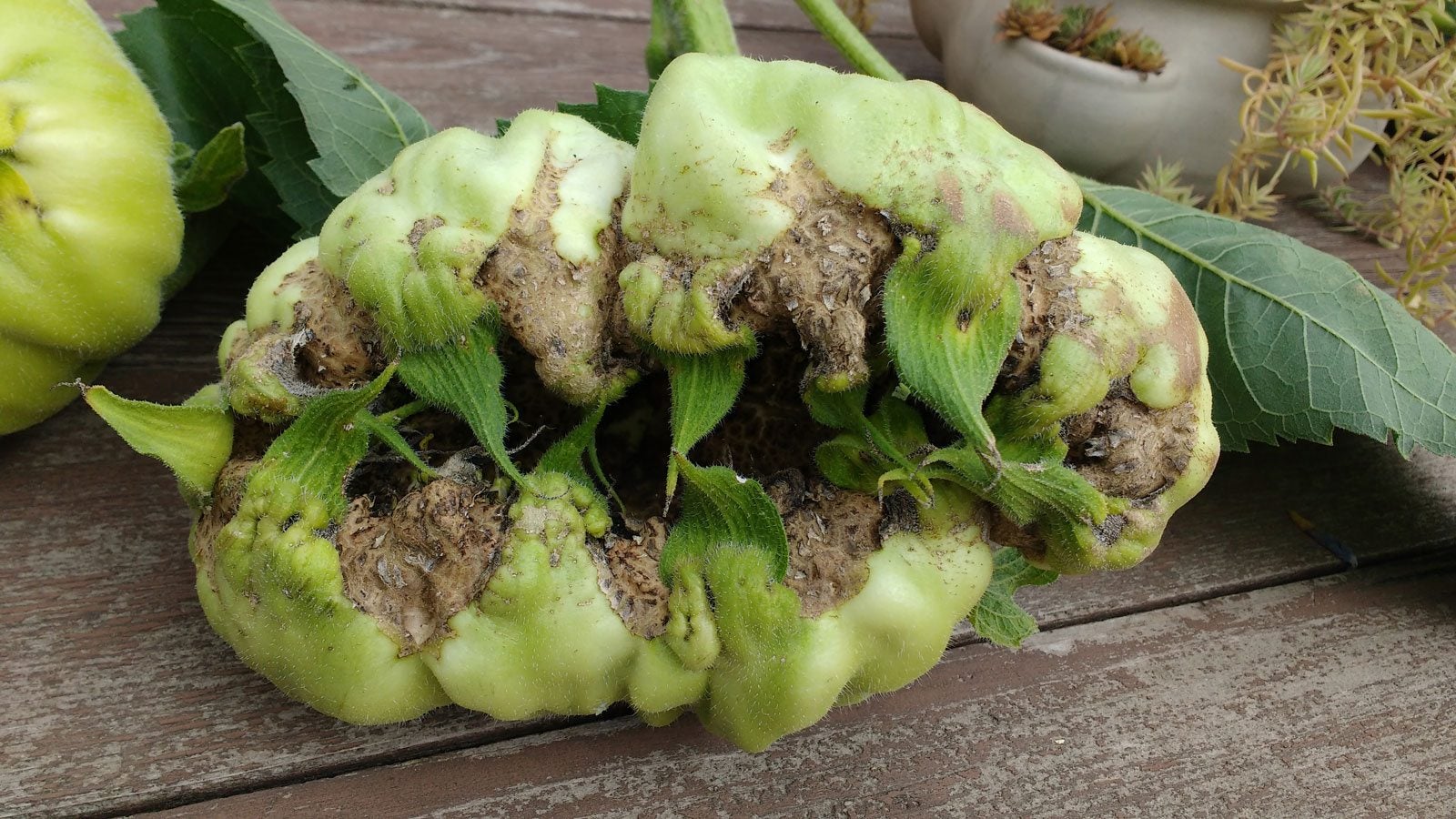What Are Sunflower Midges: Signs Of Sunflower Midge Damage

If you grow sunflowers in the Great Plains region of the United States and Canada, you should know about a sunflower pest called the sunflower midge (Contarinia schultzi). This tiny fly is especially a problem in sunflower fields in North and South Dakota, Minnesota, and Manitoba. Infestations may cause a reduction in the yield of seeds from each sunflower head or poor development of the heads overall.
What are Sunflower Midges?
The adult sunflower midge is just 1/10 inch (2.5 mm.) long, with a tan body and transparent wings. Eggs are yellow to orange and are found in clusters laid in flower buds or sometimes on mature sunflower heads. The larvae are similar in length to the adult, legless, and yellowish orange or cream colored. The sunflower midge lifecycle begins when the adults lay eggs on the bracts (modified leaves) enclosing the flower buds. After the eggs hatch, the larvae begin eating their way from the edge of the developing sunflower to the center. Then, the larvae drop to the soil and form cocoons a few inches (8 cm.) underground. Cocoons overwinter in the soil, and the adults emerge throughout the month of July. The adults locate sunflower buds, lay their eggs, and then die a few days after emerging. A second generation sometimes occurs in late summer, potentially causing a second round of damage on mature sunflower heads. The adults from this generation lay eggs from mid-August to mid-September (in the U.S.).
Sunflower Midge Damage
To identify sunflower midge damage, look for brown scar tissue on the bracts, the small green leaves just below the sunflower head. Seeds may also be missing, and some of the yellow petals on the edge of the head may be missing. If the infestation is severe, the head may appear twisted and distorted, or the bud may never develop fully. The damage usually appears on the edges of the field. Adults are difficult to find, but you may be able to see larvae if you cut open a damaged sunflower at the correct time.
How to Treat for Sunflower Midge
No effective insecticides are available for this pest. Crop rotation can help, especially if you can move next year’s sunflower planting a significant distance away from the infested area. Sunflower varieties with greater sunflower midge tolerance are becoming available. Though these varieties are not fully resistant, they will sustain less damage if they do become infested with the sunflower midge. Contact your local extension service for more information on these varieties. Another strategy is to stagger your sunflower plantings so that if one planting is attacked by these sunflower pests, the others may avoid damage. Delaying planting to later in spring may also help.
Sign up for the Gardening Know How newsletter today and receive a free copy of our e-book "How to Grow Delicious Tomatoes".
Ilana Goldowitz Jimenez is a scientific and agricultural writer with a B.S. in Plant Sciences from Cornell University and a PhD in Chemical Biology and Infectious Disease from Harvard University.